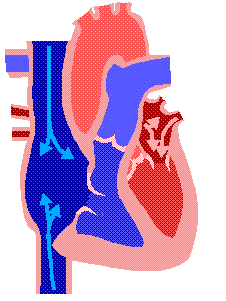Our Environment
1.What do you mean by Environment?
2.What is an ecosystem?
3.What are biodegradable substances? Give two examples.
4.What are non - biodegradable substances? Give two examples.
5. Name the two basic components of an ecosystem.
6.Name any three biotic components.
7.Name the a biotic components of an ecosystem.
8. Name some naural ecosystem.
9. Name some man made ecosystem.
10.What are producers? Give example other thangreen plants?
11. What are consumers?Give two examples.
12.What are Herbivores?Give two examples.
13. What areCarnivores?Give two examples.
14.. What areOmnivores?Give two examples.
15. What are decomposers? How do decomposers create a balancein the environment
or
What is the role of decomposers in the ecosystem?
or
Explain how will it affect the environment if the decomposers are removed from the ecosystem.
16. What is a food chain?
17. What are the steps of food chain called?
18. Define food web?
19. Write the food chain operated in a fresh water pond. Mention the food habit of each trophic level.
20. Give an example of a grassland food chain consisting of four organisma at different trophic levels. Give the scientific term used to indicate the first and third trophic level.
21. Draw schematic diagrams of a food chain and a food web.
22.Describe with the help of diagram show energy flows through different trophic levels in a food chain.
23. What will happen if we kill all the organisms in one trophic level?
24. Differentiate between food chain and food web. Give suitable examlples of each.
25. Why we say energy flow in the biosphere is unidirectional?
26. Which food chain are advantageous in terms of energy? Support your answer giving one example.
27. Consider the food chain. Grass-----Deer------Lion What will happen if lions are removed from the above food chain?
28. The amount of energy that will be available to the plants from the sun is 20,000 J. Calculate the amount of energy available to the lion in the following food chain.
Plant----Deer----Lion
29.Calculate the amount of energy that will be available to fish in the following food chain, if 10,000 J of energy is available to small algae from the sun.Small algae---- Zooplankton------ Fish-----Big fish
30. A food chain consists of the following members. If the last member recieves 30 J of energy, make a diagrammatic representation to show the flow of energy.
Snake, Vulture, Plants, and Rat
31. Why number of trophic levels in a food chain is not more then 4 or 5.
32. What is a ten percent law?
33. How will you justify that "vegetarian food habits give us more calories"? Represent it with the help of a 3 step food chain.
34.What is biological magnification?
35. Explain the process of biological magnification?
36. If a harmful chemical enters a food chain comprising snakes, peacock. mice and plants. Which of these organisms is likely to have the maximum concentrations of this chemical in its body.Give reason.
37.What is Ozone?
38. What is the importance of ozone layer?
39.What is ozone depletion?
40.State the effects caused by the depletion of the layer?
41. Give the name of the chemicals which are responsible for thinning of ozone layers.


 that is for winging from hand hold under branches and vines, using their long fingers as hooks.
that is for winging from hand hold under branches and vines, using their long fingers as hooks.









 ature and conscious association.
ature and conscious association.
















